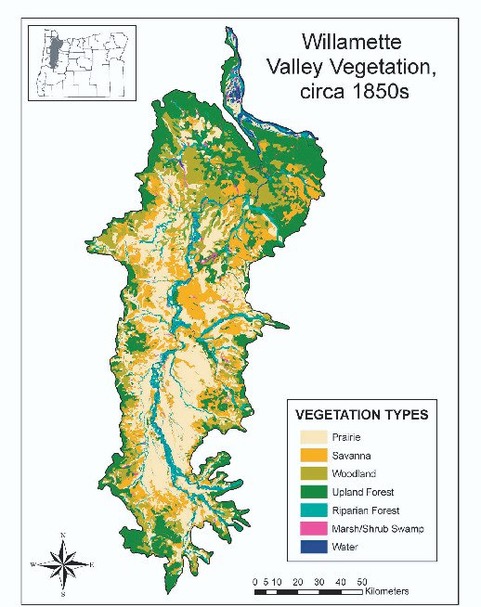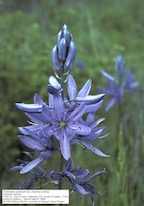|
2020 NPSO Annual Meeting Cancelled Due to the COVID-19 pandemic, and in the best interests for the health and safety of our members, the Cheahmill Chapter has decided to cancel the Annual Meeting this year. While the number of new cases should decline over the next several weeks and months, subsequent waves of COVID-19 are likely to recur once social distancing is relaxed. We are exploring hosting the meeting next year (2021) at Spirit Mountain Lodge and offering much the same program. If you have already sent in your registration form and payment, your checks will be shredded. Those whose checks were already deposited will receive a refund. We look forward to seeing all of you in 2021, hopefully at Spirit Mountain. Please stay safe and healthy through this difficult time. |
NPSO 2020 Annual Meeting
May 29 - 31 Spirit Mountain Lodge, Grand Ronde, Oregon
FRIDAY NIGHT SPEAKERS
Learning about Lucia Summers, Oregon’s First Resident Botanist
Ed Alverson, Natural Areas Coordinator, Lane County Parks
How do stories from the past speak to us today? And how do we even find them? Lucia Summers (1835-1898) and her husband, the Rev. Robert Summers (1827-1898), lived in McMinnville, Yamhill County, from 1873 to 1881, which was shortly after the Grand Ronde Reservation was established by Executive Order in 1857. They were a literate and artistic couple, and developed friendships with local Native American people. Lucia collected herbarium specimens of the local flora, which she sold to collectors in the east. Both were also interested in ethnography and built a collection of artifacts purchased from Grand Ronde tribal members. The collections ended up scattered around the world, in places like Berkeley, New York, and London, with very few remaining in Oregon to help us better understand our past. Ed will talk about his experiences researching for an article on Lucia that appeared in the NPSO journal Kalmiopsis and will suggest what additional light might be shed on the Oregon story with further study.
The Tribe Brings Fire Back to Landscapes
Colby Drake, CTGR Silviculture and Fire Protection Program Manager
As a tool for environmental systems’ health and maintenance, Tribes have known and used the medium of placing fire as a mechanism for ensuring health and hardiness of the landscape and encouraging the growth of culturally important plants. The CTGR (Confederated Tribes of Grand Ronde) Silviculture and Fire Protection Program actively uses prescribed fire within its ceded lands and statewide. Colby will highlight examples of projects and partnerships of the Tribe with state and federal agencies.
Plants for People: Improving Access to Culturally Important Plant Species
Jeremy Ojua, Native Plant Nursery Manager, CTGR Silviculture-Fire Protection Tech
The Plants for People project is intended to help incorporate Traditional Ecological Knowledge (TEK) and culturally important plant species into restoration of prairie and oak savanna habitat in the Willamette Valley. Phase I saw development of a new nursery where several species were collected and put into production in raised beds and cutting beds. Tribal elders shared their knowledge and insights for restoration and future harvest opportunities with land management agencies, and a "Tribal Native Plant Materials Development Plan" was completed to guide plant production. Phase II is expanding the production of culturally significant species and contributing to restoration projects at five sites.
Responsible Stewardship of Natural Resources for Cultural Identify, Self-sufficiency, and Sovereignty of Current and Future Generations
Lindsay McClary, CTGR Restoration Ecologist
The CTGR have a long history of stewardship. Tribal connection to the land and stewardship of natural and cultural resources have provided the Tribes with a way of life for centuries. CTGR manages the health of deer and elk herds on the reservation and provides better forage and habitat. The Tribe conducts surveys for Threatened and Endangered species on the reservation and other tribal trust properties, always looking at ways to improve fish habitat and populations in reservation streams. It is important to the Tribes that the present and future fish and wildlife management goals provide for cultural, subsistence and recreational needs of current and future Tribal members.
SATURDAY NIGHT BANQUET SPEAKER
Learning from the Historical Ecology of the Willamette ValleyEd Alverson, Natural Areas Coordinator for Lane County Parks
Like many places on Earth, the landscape of the Willamette Valley today is a product of myriad interactions between people and nature. The story of the American pioneers who settled in the Willamette Valley in the mid-1800s is a familiar part of Oregon lore, and much of the present landscape is a reflection of the changes brought about by the settlers. But the story of the Willamette Valley spans a much longer time frame, and wherever we see the native flora in the Willamette Valley, we can interpret a longer-term story of native people’s interaction with and management of the landscape to provide the resources that sustain them. Historical records, including government land surveys in the 1850s, paint a rather comprehensive picture of the landscape at that time, which was very different from today’s. These records are a window to the past and an opening for a conversation about the kind of future we would like to see. If we are to work for a future that sustains our native flora and fauna, we must understand and appreciate all the stories to be told by the Willamette Valley landscape.
History and Culture of the Confederated Tribes of Grand Ronde




